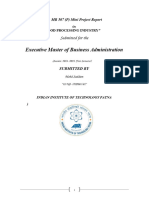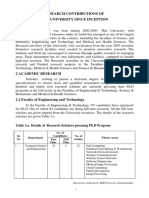0% found this document useful (0 votes)
72 views49 pagesComplete Main Project
The document outlines the significant growth potential of India's food processing sector, which is one of the largest in the country and includes various sub-sectors such as fruits, vegetables, dairy, and meat. It highlights the expected investment opportunities and employment generation in the sector, along with the importance of food processing in enhancing the value of agricultural products. The document also discusses specific food processing projects and products, indicating a robust market outlook for the industry.
Uploaded by
vishnoiaastha67Copyright
© © All Rights Reserved
We take content rights seriously. If you suspect this is your content, claim it here.
Available Formats
Download as PDF, TXT or read online on Scribd
0% found this document useful (0 votes)
72 views49 pagesComplete Main Project
The document outlines the significant growth potential of India's food processing sector, which is one of the largest in the country and includes various sub-sectors such as fruits, vegetables, dairy, and meat. It highlights the expected investment opportunities and employment generation in the sector, along with the importance of food processing in enhancing the value of agricultural products. The document also discusses specific food processing projects and products, indicating a robust market outlook for the industry.
Uploaded by
vishnoiaastha67Copyright
© © All Rights Reserved
We take content rights seriously. If you suspect this is your content, claim it here.
Available Formats
Download as PDF, TXT or read online on Scribd
/ 49
















































































